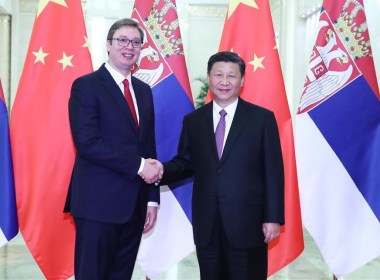Erdogan’s Risky Geopolitical Pirouette
by F. William Engdahl, New Eastern Outlook:

Turkey’s economy has been in increasingly difficult straits for months, especially since the failed July 2016 coup attempt. The latest move by President Recep Tayyip Erdoğan to fire his central bank head and replace him with a more amenable loyalist has already resulted in the largest one-time interest rate cut in the bank’s history. Will this be enough to revive growth in the troubled economy in time for the next national elections in 18 months? What seems to be Erdogan’s overall economic strategy as he tries to balance Washington, Beijing, Moscow and even Brussels? And does it have a chance to revive economic growth?
On July 25, Turkey’s new central bank governor, Murat Uysal, cut the bank’s main interest rate by an eye-popping 4.25%, from 24% to 19.75%. It took place three weeks after Erdogan sacked the previous governor for refusing to cut the economy-killing high rates, even after the lira had long passed out of the 2018 crisis. It was the first rate cut in three years and followed the firing of a central bank head who followed the economic orthodoxy that high interest rates are needed to kill inflation, another fraudulent modern economic myth made popular in the 1970’s by Fed chief Paul Volcker.
At 24%, Turkey had the highest interest rate of any major economy. Notably, the lira barely reacted to the big cut, leading Erdogan to demand that Uysal continue with further cuts. In doing so the Turkish president demonstrated his lack of reverence for one of the most powerful mandates of world finance, namely that politicians have no right to interfere in the sacred business of the “gods of money” controlling the world central banks.
Ever since the Basle Bank for International Settlements was created in 1930 by Bank of England Governor Montagu Norman, with help from the US bankers, nominally to deal with German World War I reparations payments under the Young Plan, but as it soon became clear, to serve as a politically independent world central bank monetary cartel, central bank independence has become dogma. The BIS helped create the devastating myth that central bankers independent of any elected political influence, guided by their superior wisdom, would manage economies far better than central banks that were subject to political pressure, or, god forbid that were actually state or public banks.
As has been demonstrated by many economic historians and detailed in my book, The Gods of Money: Wall Street and the Death of the American Century, every major financial boom and subsequent crash since creation of the US Federal Reserve in 2013 in a Wall Street bankers’ coup, has been created by central bank interventions, usually using interest rates. The bogus “business cycle” theory is little more than an elaborate smoke screen to conceal the role of the Fed or the ECB in the EU in controlling the economy in the interests of what US Congressman Charles Lindbergh and other Wall Street critics in the 1920’s called the Money Trust.
Will it work?
What Erdogan has done by firing Murat Cetinkaya as governor and putting a political crony in his place has set off alarm bells among western central bankers. Erdogan followed the rate cut news by declaring,“This was what needed to be done. Even this cut is not enough…”
The lira even rose after the rate cut, emboldening Erdogan. The question is whether the Turkish economy and Erdogan will succeed in reviving the troubled Turkish economy in time to improve his electoral chances in coming months before next national elections following the political defeat in the key municipal elections in both Ankara and Istanbul.
The high rates were imposed by the former central bank governor to halt a free-fall of the Lira in 2018 that Erdogan blamed on foreign interference. In effect Erdogan was right to the extent that the US Fed had begun a major series of its own rate increases “to normal,” whatever that means, and Quantitative Tightening that was sending shock waves around the world. However, the Fed actions were clearly not specifically aimed at Turkey.
For the previous ten years Erdogan and the Turkish economy had taken advantage of almost a decade of historically low global interest rates following the 2008 financial crash.
During the economic boom, cheap credit flowed into construction of hotels, apartments, bridges, railways and other projects creating a huge economic boom, but mostly on money borrowed from abroad in dollars or Japanese Yen or Euros. By 2018 Turkish corporations held some $200 billion in foreign loans. When the Fed began its reversal, foreign lenders to high-profit markets like Turkey began to exit, fearing the worst, leading to a Lira collapse.
From January 2018 to the present the lira lost a staggering 37% against the dollar as Turkish and foreign investors fled the falling lira, making it nearly impossible to repay the foreign loans from earnings. Companies went bankrupt, unemployment rose to 15% officially, and inflation near 25% by October, 2018 as the price of imports soared. With an economic boom financed with foreign loans for projects that earned in lira, the economy went into free-fall during 2018, a major reason for Erdogan’s poor election results this year.
Loading...



